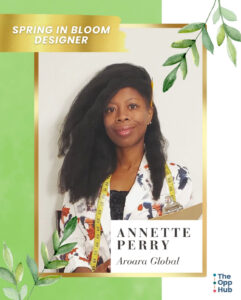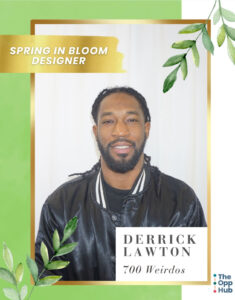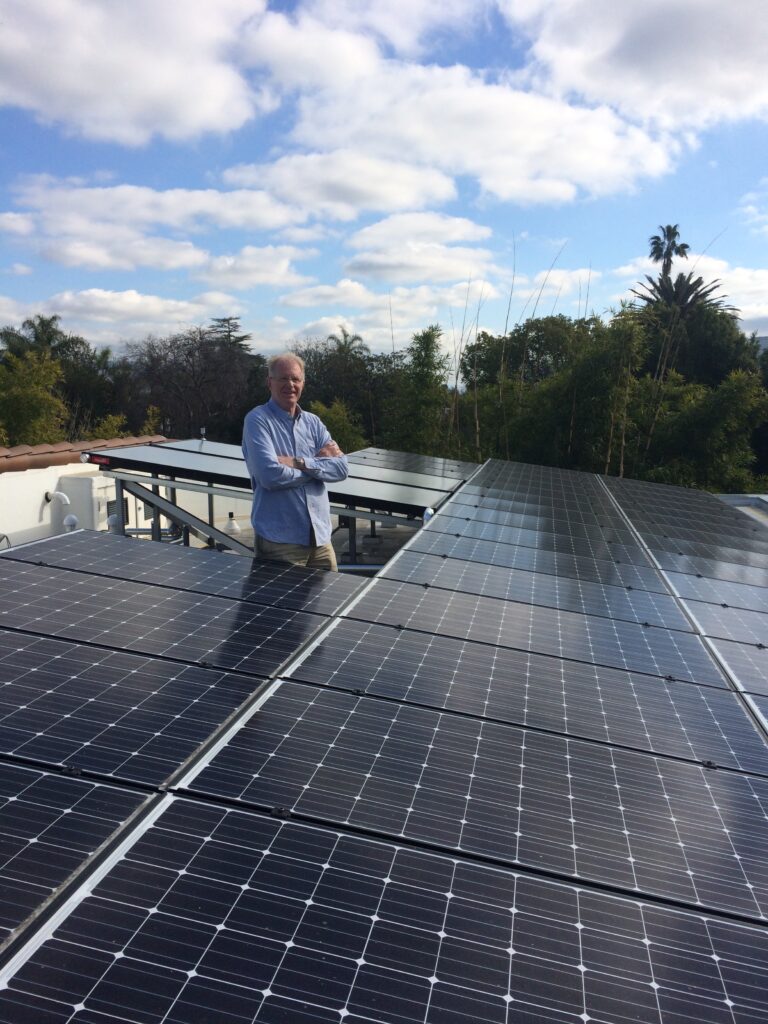
BY MELISSA BILLIE CLARK
The Learning Garden, (located at Freeport Loop, is a part of The Opp Hub programming), serves as a vibrant space for food production and educational opportunities within the community. Farm Manager Jesse Miller tirelessly and dedicatedly leads the garden and consistently equips it with the latest tools and resources. His most recent initiative is composting, a natural method for recycling organic waste and replenishing soil nutrients.
Miller is committed to promoting sustainable farming practices, which not only keep the garden productive but also environmentally responsible.
In an exciting development, The Spring Creek Sun recently hosted renowned environmentalist and actor Ed Begley Jr., who joined us over Zoom from his California home. Begley, a Golden Globe winner and seven-time Emmy nominee, has spent over four decades advocating for environmental sustainability. During the session, he shared invaluable insights, inspiring community members to embrace eco-friendly practices and highlighting the importance of protecting our planet.
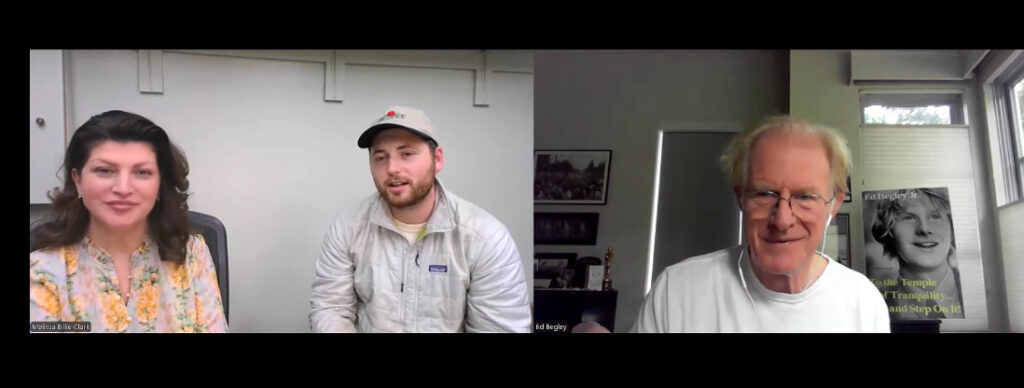
JM: Currently, we’re working with a nonprofit in New York City called Big Reuse. They educated us about composting and why we should compost, and they introduced composting to new communities. We have not started composting in Starrett City, so I’m working with them and the Department of Sanitation to educate our community about it. We’ve set up a compost bin outside our farm but haven’t had the most engagement yet. So, could you speak more about composting?
EB: In the past, I made a simple sift screen using chicken wire, which has proven helpful. It has two handles, and I shake it back and forth with the help of a friend or my daughter. This helps sift out the rocks, resulting in nice fine compost. Sometimes, worms show up naturally, but I can order them online if I notice they aren’t present. I used to wait until my local garden supply store had them, but they’ve been out of stock for months. So, I searched online and found a place that delivers worms without harming them, and I placed an order just a week ago.
As for whether I can supply my entire garden with just my compost, I admit that I “cheat” occasionally. Sometimes, I don’t have enough ready compost in that crucial fourth bin. When that happens, I buy some Doctor Earth compost, which I find quite good.
For anyone feeling daunted by the idea of making quality compost, I want to reassure you that it comes with a learning curve. There have been times when my compost has been great and other times when it hasn’t turned out as well. Finding the right nitrogen-to-carbon ratio is key, but you don’t need to remember specific numbers. A simple rule of thumb is to use half brown materials and half green materials. Brown materials might include leaves, dried grass, and sawdust, while green materials encompass fresh leaves, grass, and kitchen scraps. Keep the mixture moist but not soaking wet; you’ll end up with great compost every time.
I also enjoy adding worms to the mix, as they help the composting process along. Additionally, I sometimes drive a short distance to a stable to get fresh horse manure, which is an excellent addition. While this method may not be allowed in places like New York City, I find it to be a fantastic trick!
JM: Wow, that’s impressive. On our farm in Starrett City in Brooklyn, 100% of the compost and the fertilizer we’re using, besides just a potassium mineral fertilizer, is composted from kitchen scraps in Brooklyn and composted by Big Reuse or the Department of Sanitation. So, at most, it went to Staten Island, then returned to our farm, and our produce was so delicious. You can taste the level of organic complexity, freshness, nutrient availability, and all that stuff in our carrots. So, I was wondering, do you notice that difference in richness from, like, really using fresh compost in your garden?
EB: Absolutely! If I get my soil and pH right for what I’m growing and ensure my soil is rich in nutrients, I always end up with great vegetables. It’s amazing! I’ve also become quite skilled at using non-toxic sprays, like a mix of cayenne pepper and soapy water, to keep aphids and other pests off my plants. That helps a lot.
Another handy tip I discovered years ago is to use an electric grinder. It’s a small grinder, about the size of a standard kitchen appliance. I use it to process table scraps like corn cobs and other things that take forever to break down. When I put these items through the grinder, they turn into a pulpy mass, which I can then add to my compost. This includes things like avocado pits and thick pieces of leek, which would take a long time to decompose on their own. Even banana peels can take a while but grinding them speeds up the process.
The grinder has a push stick, so you don’t risk getting your hands caught in it. The opening is small, about the size of eyeglasses, making it safe to use.
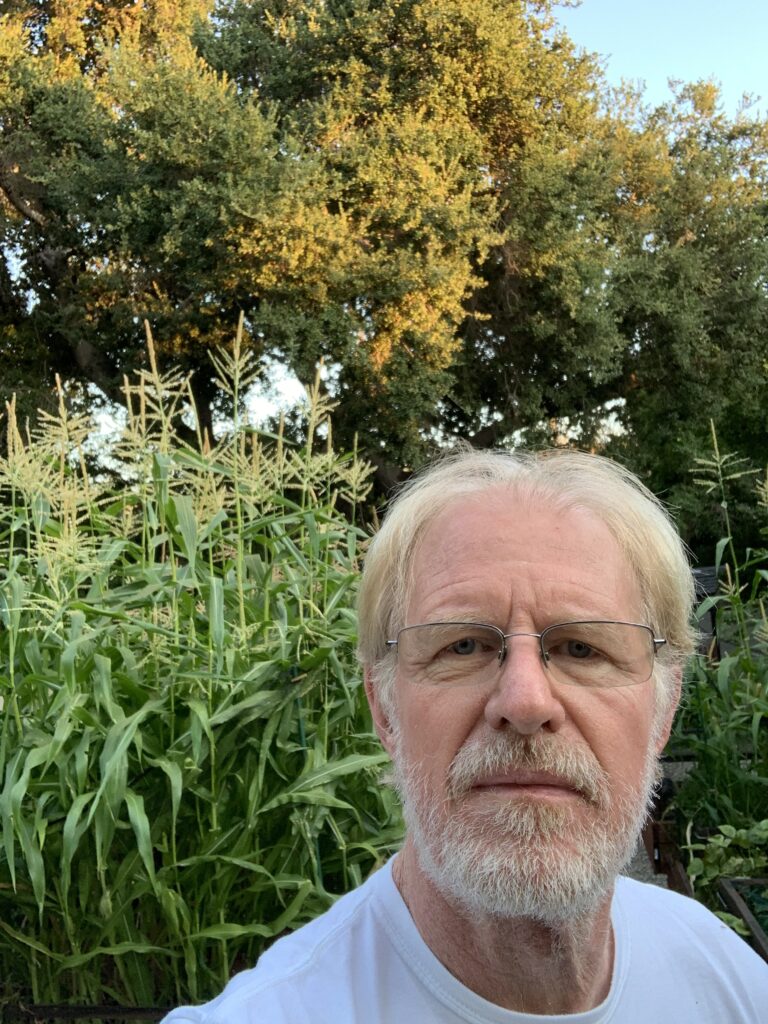
JM: Do you have any advice for residents who might not have space for tubs but want to collect their kitchen scraps for a compost collection site? Are there any easy tricks to avoid smells or discomfort when starting this new waste practice in an apartment?
EB: I have a rollout disposal bin that measures about two feet by two feet (24 inches by 24 inches). Inside, I have separate containers: one for trash that goes to the landfill, which usually has very little in it; a recycling bin for bottles and cans; another for plastic films and other plastics that don’t go in the regular blue recycling bin in Los Angeles; and the last bin, which is about five inches wide and twelve inches long, has a lid on it for table scraps. When cooking a lot, like during Thanksgiving, I empty that bin several times into the compost area.
For those looking for alternatives, you can easily find a paint bucket or a diaper pail with a lid at any hardware store. I did the same thing in the 1970s when I lived in an apartment. Although I wasn’t very serious about composting then, I felt good returning waste to the soil. I kept my table scraps in a lidded container near the sink and would eventually take them to a nearby area, like some railroad tracks, and bury them in the ground to return them to nature. Eventually, to my surprise, I found tomatoes growing there because of the tomato seeds in the scraps.
SCS: How can we get the community more involved with our garden?
EB: I found that having a nice presence online can help you reach other people and start some gardening clubs. Well, in my case, I don’t have to start one. There are lots of gardening clubs already in place. So, I just joined up with one of them, and we started sharing information. And that was very, very helpful.
“It was an honor to speak with Ed Begley Jr., a longtime leader of the environmental movement, about the importance of composting and gardening as we head into the new year. During our conversation, we discussed how simple it is to start composting and its significant impact on reducing waste and nourishing the soil.” – Spring Creek Towers Farm Manager Jesse Miller.
Visit https://begleyliving.com/ to learn more about Begley’s work, sustainable products, and memoir.
To learn more about the Learning Garden, head to www.theopphub.org & https://bit.ly/4hlF3dQ for Jesse Miller’s information.
Ed Begley, Jr., is a longtime California resident; our hearts go out to the Los Angeles community and all those affected by the fires throughout southern California.


